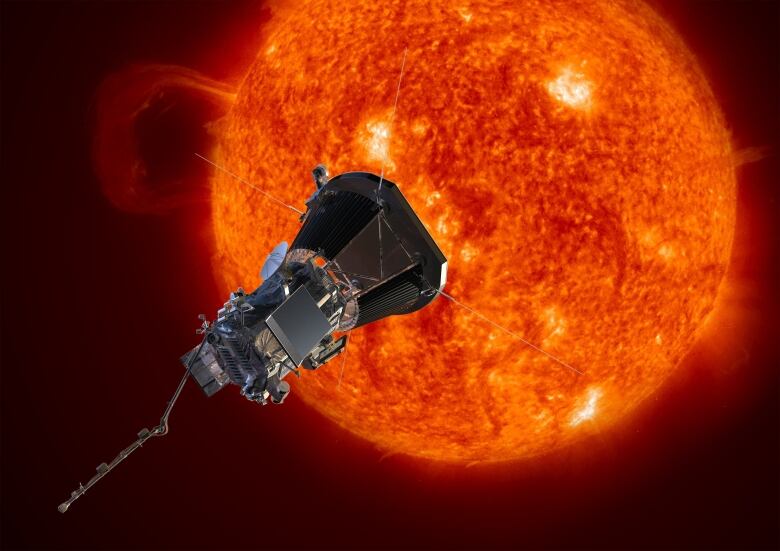First NASA spacecraft named after living researcher to head for the sun
Parker Solar Probe will be 'ready to do battle with the solar elements,' says 90-year-old namesake

A NASA spacecraft will aim straight for the sun next year and bear the name of the astrophysicist who predicted the existence of the solar wind nearly 60 years ago.
The space agency announced Wednesday that the red-hot mission would be named after Eugene Parker, professor emeritus at the University of Chicago. It's the first NASA spacecraft to be named after a researcher who is still alive, noted the agency's science mission chief, Thomas Zurbuchen.
Scheduled to launch next summer from Cape Canaveral, the Parker Solar Probe will fly within 6.4million kilometresof the sun's surface right into the solar atmosphere. That will be considerably closer than any other spacecraft, and the mission will subject the probe to brutal heat and radiation like no other man-made structure before. The materials weren't available until now to undertake such a gruelling mission.
The purpose is to study the sun's outer atmosphere and better understand how stars like ours work.

NASA spacecraft have travelled inside the orbit of Mercury, the innermost planet in the Solar System.
"Until you actually go there and touch the sun, you really can't answer these questions," like why the corona the outer plasma-loaded atmosphere is hotter than the actual surface of the sun, said mission project scientist Nicola Fox of the Johns Hopkins UniversityApplied Physics Laboratory.
The corona is a very active part of the sun, producingsolar wind, solar flares and coronal mass ejections, all of which influence space weather and conditions on Earth.
An example is the Quebec blackout of March 13, 1989. A solar flare erupted from the sun followed by a coronal mass ejection (CME). The particles raced towardEarth and slammed into our magnetic field.
While the results were visually stunning, producing the northern lights, it also caused electric currents to travel along the ground. Those currents found a weakness in the Quebec power grid, which overloaded and failed. Thousands were left in the dark and cold.
Though measures have been put into place to prevent something like that from re-occurring, space weather forecasters would like to be able to better predict the activity at the source the sun.
'Hottest, fastest mission'
Parker Solar Probe formerly known as Solar Probe Plus will venture seven times closer than any previous spacecraft, Fox said.
The announcement came during a University of Chicago ceremony honouring Parker, who turns 90 on June 10. Parker called it "a heroic scientific space mission," referring to the temperatures and solar radiation to be endured by the spacecraft, and the extreme safeguards taken. The probe will be "ready to do battle with the solar elements as it divulges the secrets of the expanding corona," he said.

While 6.4 million kilometresmay not sound that close, it is by solar standards, according to Fox. She urged the crowd to remember while viewing the total solar eclipse this August to remember that the spacecraft eventually will be "right in there" amid the hazy corona surrounding the sun.
Parker Solar Probe will travel at a blistering speed of 692,000 km/hand zip in and out of a region where the mercury hits 1,371 C.
"Solar probe is going to be the hottest, fastest mission. I like to call it the coolest, hottest mission under the sun," Fox said.
The spacecraft will carry a chip containing photos of Parker as well as a copy of his ground-breaking research paper from 1958.
Parker's prediction of the solar wind the intense flow of charged particles or plasma from the sun initially was met with skepticism and even ridicule. But it was confirmed a few years later by observations from NASA's Mariner 2 spacecraft. Until then, scientists believed the space between planets was merely vacuum, rather than part of the encompassing heliosphere it proved.
With files from CBC News












_(720p).jpg)


 OFFICIAL HD MUSIC VIDEO.jpg)
.jpg)



























































































